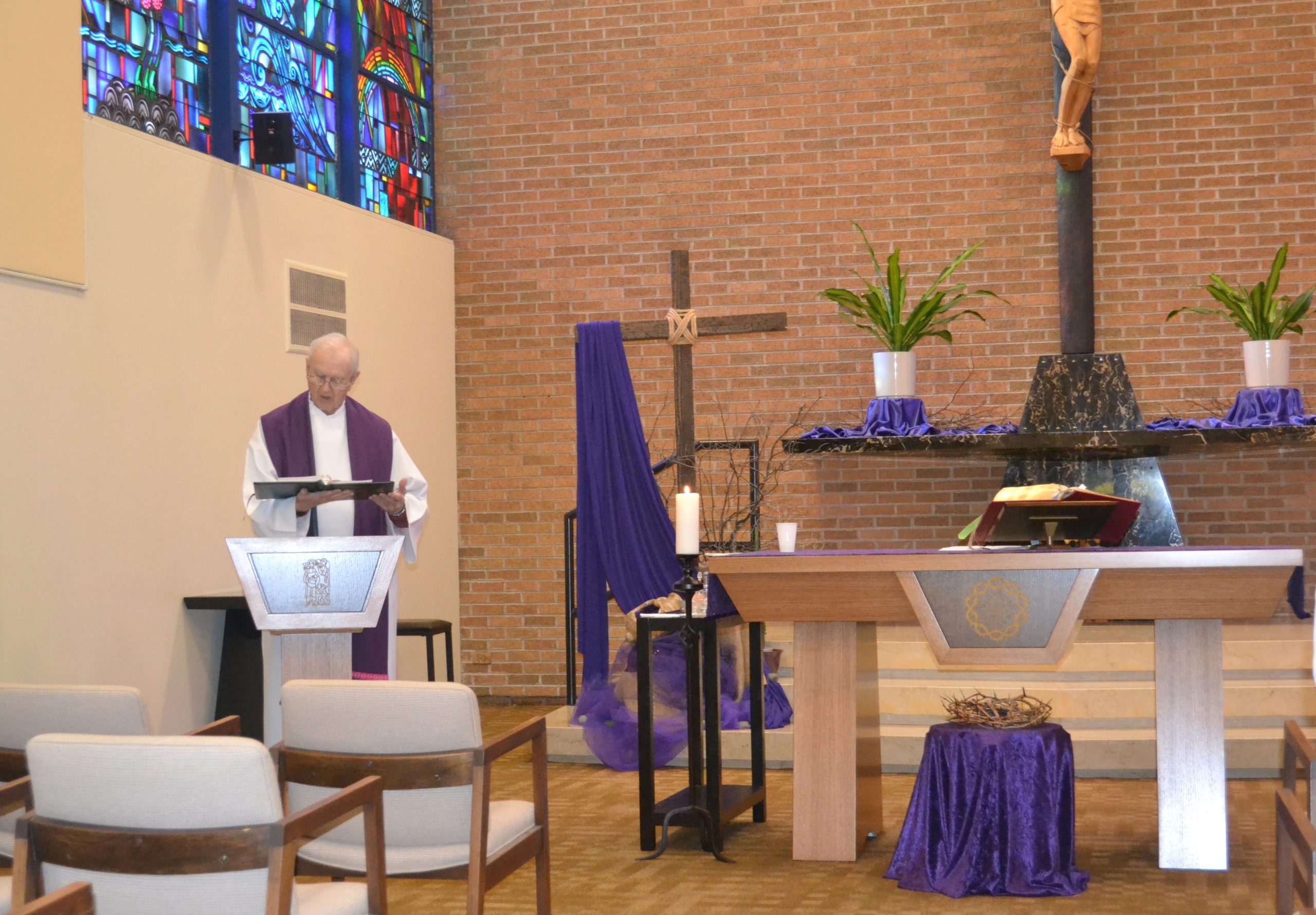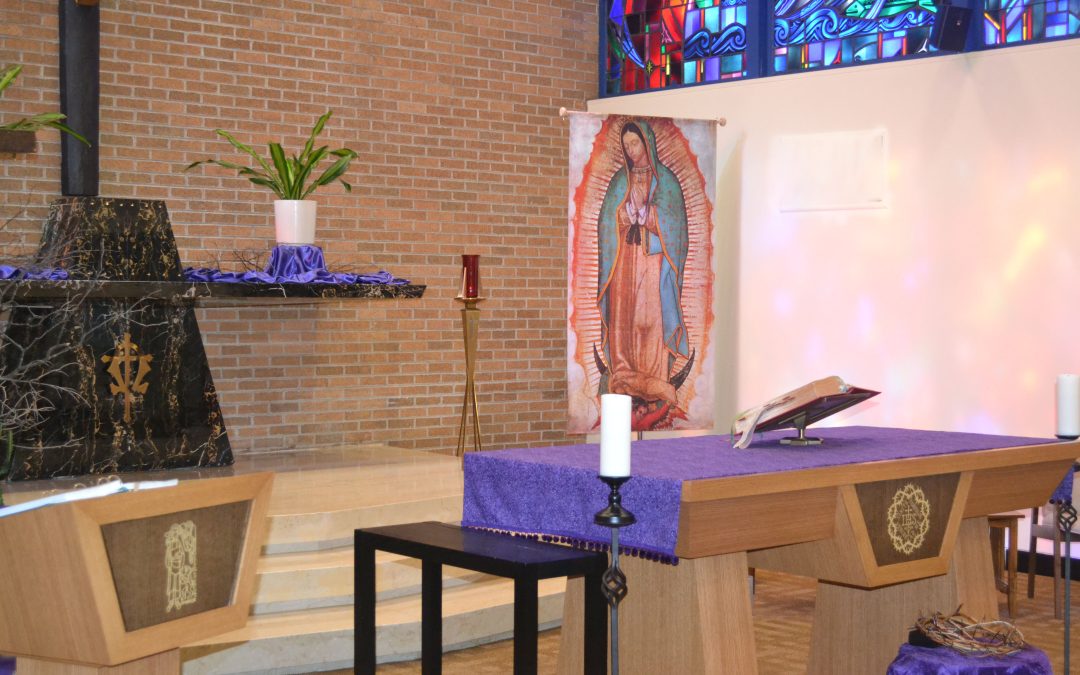A design studio in Milwaukee, that specializes in liturgical furnishings, was commissioned by the Provincial Council to create a new altar and ambo for the Province Center Chapel.

Fr. John Van Wiel reads the gospel at the new ambo.
“They were designed expressly for the Province Center Chapel,” says Fr. Mark Francis, CSV, Provincial. “They are constructed of the best materials – rift cut red oak – with trapezoidal bases supporting the altar, that echo the geometry of the original black marble altar behind it.”
Additionally, both the altar and ambo feature distinctly Viatorian symbols on the front: The altar is emblazoned with the Viatorian Community seal and an image of St. Viator is engraved on the front of the ambo.
“Both are made to be inviting and proportional for the space,” Fr. Francis adds.
Viatorians turned to the Milwaukee studio, Inspired Artisans, after seeing their work at Cristo Rey St. Martin, whose officials commissioned them when the school moved to its new location, in 2018. In part, the school turned to the studio’s owners, Gianfranco Tassara and his son, Gino, because of a Cristo Rey Connection.
.
.
Though Gianfranco Tassara is a native of Italy, he attended high school in Lima, Peru and was inspired by the missionary work there of Fr. John Foley, SJ, who would go on to be the founder and first president of the Cristo Rey Network of schools.
“They do custom work and are very good, specializing in sacred and liturgical furnishings,” says Preston Kendall, President of Cristo Rey St. Martin. “I also liked that they are personally steeped in Latin and Hispanic culture.”
At the school, Inspired Artisans have outfitted its entire chapel, including its altar, ambo, candle holders, plant stands, tabernacle, celebrant chairs, side table for the offertory gifts, and processional cross.
Viatorians have commissioned Inspired Artisans in the past, to create distinctive statuettes given to jubilarians. However, the new altar and ambo are the start of a refresh of the chapel — which dates back to the opening of the building, in 1951 — and part of Phase II of the renovation of the entire building. Expect to see new lighting, paint and chairs in the future. Its distinctive stained glass windows, which fill the space with vibrant colors when the sun is shining, will remain untouched.
“Appropriately, this is the first step in that process,” Fr. Francis says. “The altar and the ambo are the two elements around which the community gathers for Eucharist and should be the focal points of Catholic worship.”

